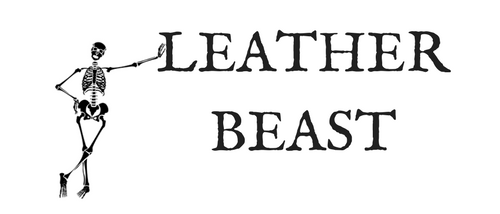The 3 Main Factors That Affect Thread Length
I get this question a lot…
How do I know how much thread I need for my project or my area of stitching?
It’s a good question and luckily there is a pretty straightforward answer. There are 3 main factors that will affect your determination of how much thread you will need for saddlestitching your project. (Find out more about thread here)
The first and most important factor is the length of your stitching area.
A good rule of thumb is to measure out enough thread to stretch across the length of your stitching area about 4 times. I call this the 4X Rule.
After you've measured out about 4 time the area that you are stitching, add a few inches onto the measurement. There is nothing worse then cutting your thread and getting almost all the way to the end of your project and realizing that you’ve run out of thread or will not have enough to finish the line of stitching.
So because of the factors that we're about to go over that can affect how much thread you need, you want to have a little bit of a buffer. I usually add 3-6 additional inches onto the length of thread.
The second factor that can affect how much thread you need, is the spacing of your stitches.
Depending upon the tool that you’re using (and how spaced out the prongs are on your iron or chisel) to create your stitch mark or hole you might need more or less thread. For most small projects this is a fairly negligible amount.
In the case of a wallet or some other small project, your buffer of 3-6” will most likely cover any additional thread needed. But if you’re working on a larger area and you have used stitching chisels or pricking irons where there is less space between each prong resulting in more stitches per inch, then you might want to add a few more inches of thread to your buffer.
If you’re working with more spaced out stitches resulting in less stitches per inch, then you would not need to increase your thread length.
The 3rd and last main factor is the thickness and rigidity of your leather.
When you are using a thicker leather you will need slightly more thread. Thicker leather has more surface area resulting in needing more thread to get from stitch to stitch.
On the contrary, if you’re using softer more pliable leather, you will need slightly less thread. I recently made a leather bag out of buttery soft tumbled leather. It was very flexible leather and so the amount of thread that I needed was less.
So these are the 3 main factors that you need to consider when measuring out your thread for a project. Take into consideration the length of your stitching area, the spacing of your stitches as well as the thickness and rigidity of your leather before you cut your thread.
And always air on the side of caution. I'd rather waste a few inches of thread then run out with only a few stitches left to go!

